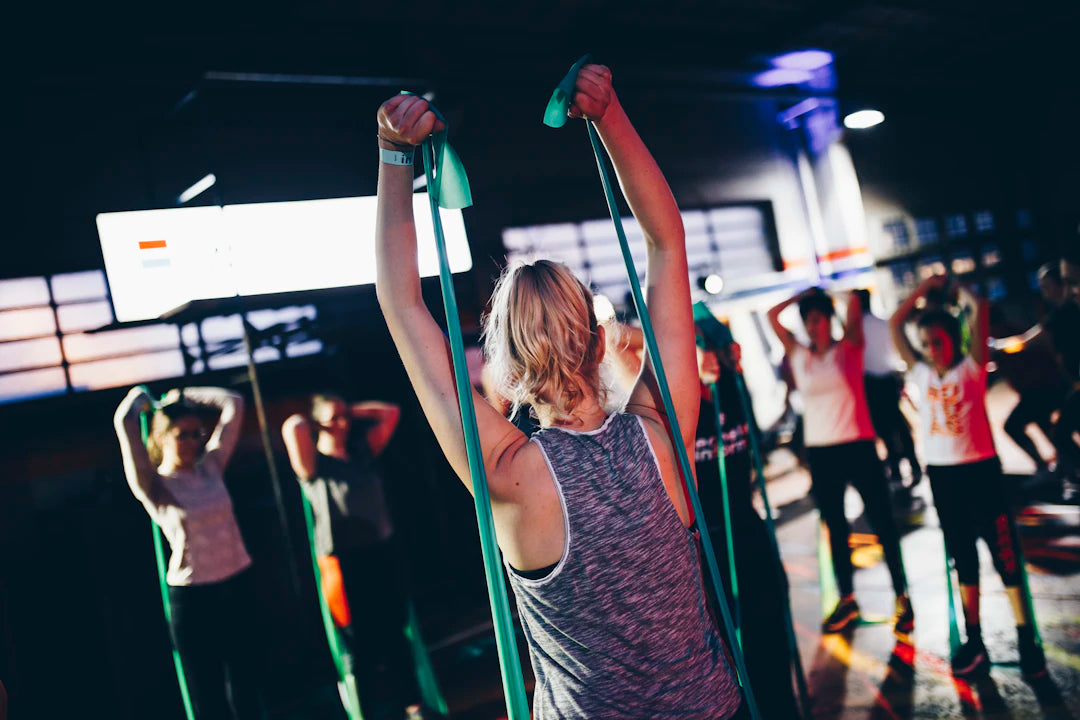
The Essential Guide to Balance Exercises for Fall Prevention
Share
Overview
Balance exercises are crucial for older adults to reduce fall risks and enhance stability. Common challenges include joint pain, declining muscle strength, and motivation struggles. Effective low-impact workouts like standing on one foot, heel-to-toe walking, and side leg raises can help improve balance. Additionally, maintaining healthy lifestyle habits such as hydration, nutrition, and mindfulness supports overall well-being. Staying motivated can be achieved by setting realistic goals and joining community classes. Embrace the journey to better balance for a healthier, more fulfilling life.
Frequently Asked Questions
1. Why are balance exercises important for older adults?
2. What common challenges do older adults face that affect balance?
3. What are some examples of low impact workouts for seniors that improve balance?
4. How can seniors stay motivated to exercise regularly?
5. What lifestyle habits can enhance the benefits of balance exercises?
As we age, maintaining our overall health can sometimes feel like a challenge. One of the most important aspects of staying healthy and active is ensuring that we reduce the risk of falls. This is where balance exercises come into play. They provide tremendous benefits specifically tailored for older adults. In this article, we will explore the role of balance exercises in fall prevention and how they can fit into a routine of low impact workouts for seniors.
Understanding the Importance of Balance
Balance is the ability to maintain your body’s center of mass over its base of support. As we age, our balance can become compromised due to various factors. Joint pain, muscle weakness, and even challenges in vision can all contribute to balance issues. Unfortunately, a decline in balance can lead to an increased risk of falls, which can have serious consequences, such as fractures or mobility loss.
Every year, millions of older adults experience falls, making it one of the leading health threats in this age group. However, incorporating balance exercises into regular activity can significantly reduce this risk. Not only do these exercises enhance stability, but they also promote strength, coordination, and confidence.
Common Challenges Older Adults Face
Joint Pain
For many seniors, joint pain can make it difficult to participate in regular physical activity. Issues such as arthritis or previous injuries can hinder movement and discourage exercise. It's vital to approach balance training with sensitivity to these issues, opting for low impact workouts for seniors that prioritize joint health.
Balance Issues
As mentioned, balance can decline with age. This is often due to a decrease in muscle strength, flexibility, and changes in the inner ear that affect equilibrium. Falls are usually a result of a combination of poor balance and environmental hazards. Therefore, focusing on balance training becomes essential.
Motivation Struggles
Staying motivated to exercise can be a hurdle for many older adults. Engaging in an enjoyable, supportive fitness environment can make all the difference. Creating a community or finding a workout buddy can provide necessary encouragement and accountability.
Integrating Low Impact Workouts for Seniors
Low impact workouts for seniors are a fantastic option for improving balance while being gentle on the body. Here are some safe and effective routines that can be seamlessly integrated into your weekly schedule:
1. Standing on One Foot
This simple exercise can be done virtually anywhere and at any time. It strengthens the ankle and calf muscles while boosting overall balance.
- Stand near a sturdy chair or countertop for support.
- Shift your weight to one foot and lift the opposite foot off the ground.
- Hold the position for 10–30 seconds, then switch to the other foot.
- Repeat this 3-5 times for each side. Challenge yourself by closing your eyes or holding the position longer as you become more stable.
2. Heel-to-Toe Walk
The heel-to-toe walk is a great exercise that focuses on balance and coordination.
- Find a straight path free of obstacles.
- Place the heel of one foot directly in front of the toes of the other foot with each step.
- Focus on a spot ahead to help maintain your balance.
- Walk this way for 20–30 feet, then repeat back.
3. Side Leg Raises
This exercise helps strengthen hip and leg muscles, which are crucial for maintaining stability.
- Stand next to a chair or wall for support.
- Keeping your leg straight, lift one leg out to the side slowly, then lower it back down.
- Complete 10–15 repetitions, then switch legs.
Cultivating Safe and Healthy Lifestyle Habits
To enhance the benefits of balance exercises in fall prevention, it is essential to adopt a holistic approach that includes healthy lifestyle habits.
Stay Hydrated
Dehydration can lead to dizziness, increasing the risk of falls. Make sure to drink enough fluids throughout the day. Water is always the best choice!
Prioritize Nutrition
A balanced diet rich in calcium, vitamin D, and other essential nutrients can bolster bone health. Incorporate a variety of fruits, vegetables, whole grains, and lean proteins into your meals.
Regular Health Check-ups
Regular visits to your healthcare provider can help monitor medications and health conditions that may impact your balance. Discuss any medications that may cause dizziness and ask about exercises specifically suited for your needs.
Practice Mindfulness & Mental Fitness
Staying mentally sharp is just as crucial as physical fitness. Engaging in puzzles, reading, or even participating in social events can help keep the mind active. A clear, focused mind can significantly enhance physical balance and coordination.
Getting Started and Staying Motivated
Starting a new exercise routine can feel daunting, but remember, every small step counts! Here are some tips to help you get started:
- Set realistic goals. Start with small, achievable targets, like incorporating 10–15 minutes of balance exercises into your day.
- Choose a time that works for you. Making exercise a regular part of your day helps build consistency.
- Find a buddy! Exercising with a friend can make activities more enjoyable and ensures you stay committed.
- Track your progress. Keeping a journal of your activities and improvements can be a great motivator.
Join a Class
Consider joining a local class focused on balance exercises or gentle fitness. Exercising within a supportive community not only motivates but also makes workouts more enjoyable. Many community centers offer low impact workouts for seniors, making it accessible for everyone!
Be Kind to Yourself
Remember, it’s perfectly normal to encounter obstacles along your fitness journey. Those days when your muscles ache or your motivation wanes? They're part of the process. Be kind to yourself, and recognize that each effort is a step toward greater health and balance.
Afraid of falling? Acknowledge your fears but don’t let them hold you back. Exercise, especially balance training, is your ally in overcoming those fears. With each session, you’ll notice improvements not only in your physical stability but also in your confidence levels.
As you step into this journey, envision how balance exercises will enable you to engage with life more fully. From playing with grandchildren to social outings, being steady on your feet opens a world of experiences. And remember, low impact workouts for seniors don’t just promote safety; they illuminate a brighter, healthier path forward.
Embrace the challenge and dance your way into a healthier future, where each step taken leads to greater independence and joy. Let balance exercises be your winning strategy in preventing falls and fostering a more fulfilling lifestyle!
